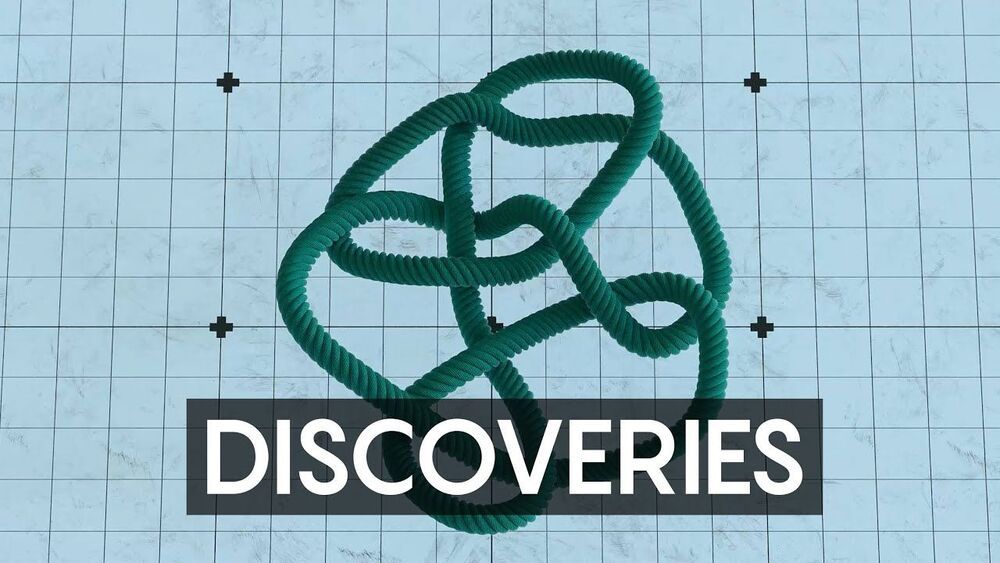Page 6650
Jan 7, 2021
Ryland Engelhart — Kiss The Ground — Regenerative Agriculture For Planetary Regeneration
Posted by Ira S. Pastor in categories: business, education, food, sustainability

Executive director & co-founder of kiss the ground, and producer of kiss the ground the movie, discussing regenerative agriculture for planetary regeneration.
Ryland Engelhart, is Executive Director & Co-Founder of Kiss The Ground (https://kisstheground.com/), a non-profit organization dedicated to planetary regeneration, and is the producer of Kiss The Ground, the Movie, recently released on Netflix.
Jan 7, 2021
Supercomputer models describe chloride’s role in corrosion
Posted by Saúl Morales Rodriguéz in categories: economics, supercomputing
Researchers have been studying chloride’s corrosive effects on various materials for decades. Now thanks to high-performance computers at the San Diego Supercomputer Center (SDSC) at UC San Diego and the Texas Advanced Computing Center (TACC), detailed models have been simulated to provide new insight on how chloride leads to corrosion on structrual metals, resulting in economic and environmental impacts.
Conducted by a team from Oregon State University’s (OSU) College of Engineering, a study discussing this newfound information was published in Materials Degradation, a Nature partner journal.
“Steels are the most widely used structural metals in the world and their corrosion has severe economic, environmental, and social implications,” said study co-author Burkan Isgor, an OSU civil and construction engineering professor. “Understanding the process of how protective passive films break down helps us custom design effective alloys and corrosion inhibitors that can increase the service life of structures that are exposed to chloride attacks.”
Jan 7, 2021
Researchers Identify and Characterize 3 Molecular Subtypes of Alzheimer’s
Posted by Genevieve Klien in categories: biotech/medical, neuroscience
Summary: Using data from RNA sequencing, researchers have identified three molecular subtypes of Alzheimer’s disease.
Source: Mount Sinai Hospital.
Researchers at the Icahn School of Medicine at Mount Sinai have identified three major molecular subtypes of Alzheimer’s disease (AD) using data from RNA sequencing. The study advances our understanding of the mechanisms of AD and could pave the way for developing novel, personalized therapeutics.
Jan 7, 2021
The moon will soon have better 4G than many places on Earth
Posted by Genevieve Klien in categories: internet, space travel
Can I sign up to go to the moon? It might be easier than trying to get a better 4G here on planet Earth.
Jan 7, 2021
Momentus delays first Vigoride launch
Posted by Genevieve Klien in category: space travel
In-space transportation provider Momentus is delaying its first operational mission because of delays completing an interagency review.
WASHINGTON — In-space transportation provider Momentus is delaying its first operational mission, which was to fly on a SpaceX Falcon 9 later this month, because of delays completing an interagency review.
In a Jan. 4 statement, Momentus said the flight of its first Vigoride tug, which was to be part of the payloads on a Falcon 9 dedicated rideshare mission launching as soon as Jan. 14, will be delayed to later in the year because it was unable to get approval from the Federal Aviation Administration for the mission.
Jan 7, 2021
2020’s Biggest Breakthroughs in Math and Computer Science
Posted by Gerard Bain in categories: computing, mathematics, particle physics, quantum physics, science

For mathematicians and computer scientists, 2020 was full of discipline-spanning discoveries and celebrations of creativity. We’d like to take a moment to recognize some of these achievements.
1. A landmark proof simply titled MIP = RE” establishes that quantum computers calculating with entangled qubits can theoretically verify the answers to an enormous set of problems. Along the way, the five computer scientists who authored the proof also answered two other major questions: Tsirelson’s problem in physics, about models of particle entanglement, and a problem in pure mathematics called the Connes embedding conjecture.
Continue reading “2020’s Biggest Breakthroughs in Math and Computer Science” »
Jan 7, 2021
JetPack Aviation raises $2M to build the prototype of its flying motorcycle
Posted by Quinn Sena in categories: robotics/AI, sustainability, transportation
Like.
Flying cars are fine — but why use a car when you can have a motorcycle instead? YC-backed startup JetPack Aviation wants to answer that question with the world’s first flying motorcycle, a personal aircraft dubbed “The Speeder,” a name that Star Wars fans will surely appreciate. Now, JetPack has raised a seed round of $2 million from investors indulging Draper Associates, Skype co-founder Jaan Tallinn, YC, Cathexis Ventures and a group of angels that it says will fund the development of the Speeder’s first functional prototype.
Back in March, JetPack revealed its plans for the Speeder, which it says will provide a fully stabilized ride that’s either pilot-controlled or fully autonomous. It can take off and land vertically, and reach top speeds of potentially over 400 MPH. There are no exposed rotors systems, which make it a lot safer and easier to operate than a lot of other VTOL designs and helicopters, and the company says it can also be refueled in less than 5 minutes, which is a dramatically shorter turnaround time for powering up versus an electric vehicle.
Continue reading “JetPack Aviation raises $2M to build the prototype of its flying motorcycle” »
Jan 7, 2021
The Earth has been spinning faster lately
Posted by Saúl Morales Rodriguéz in category: futurism
Scientists around the world have noted that the Earth has been spinning on its axis faster lately—the fastest ever recorded. Several scientists have spoken to the press about the unusual phenomenon, with some pointing out that this past year saw some of the shortest days ever recorded.
For most of the history of mankind, time has been marked by the 24-hour day/night cycle (with some alterations made for convenience as the seasons change). The cycle is governed by the speed at which the planet spins on its axis. Because of that, the length of a day has become the standard by which time is marked—each day lasts approximately 86400 seconds. The day/night cycle is remarkably consistent despite the fact that it actually varies slightly on a regular basis.
Several decades ago, the development of atomic clocks began allowing scientists to record the passage of time in incredibly small increments, in turn, allowing for measuring the length of a given day down to the millisecond. And that has led to the discovery that the spin of the planet is actually far more variable than once thought. Since such measurements began, scientists have also found that the Earth was slowing its spin very gradually (compensated by the insertion of a leap second now and then)—until this past year, when it began spinning faster—so much so that some in the field have begun to wonder if a negative leap negative second might be needed this year, an unprecedented suggestion. Scientists also noted that this past summer, on July 19, the shortest day ever was recorded—it was 1.4602 milliseconds shorter than the standard.
Jan 7, 2021
Looking Glass converts any photo into 3D image
Posted by Saúl Morales Rodriguéz in categories: holograms, mobile phones
On the first day of a popular psychology course in the 1970s at City College of New York, students were told the story of how a remote South American tribe that was never exposed to technology or even electricity reacted when they saw a cowboy program on TV for the first time. Panic-stricken viewers dodged out of the way as galloping horses disappeared at the edge of the screen, while others searched high and low to find the missing animals. These were old, bulky televisions with scrappy black-and-white displays. But to the tribe members, the images were chillingly real.
One wonders how those folks—not to mention modern-day tech geeks as well as the general public—would react to a portable projector that fits in the palm of your hand and is capable of displaying stunningly realistic 3D color holographic images. Chances are they’d be pretty impressed.
Looking Glass Factory, a Brooklyn-based tech firm, is set to offer an 8 holographic display called Portrait that will convert users’ favorite personal photos into lifelike holograms. No special equipment or skills are required. Users simply take regular 2-D photos with any device, ranging from sophisticated DSLR setups to low-end cellphones—even old family Polaroids should work—and send them to Looking Glass Factory’s cloud-based service.
















